Bitcoin Starts Bull Market? These eight key indicators all turned green for the first time since early 2021

Earlier this week, eight out of eight key on-chain indicators and technical indicators tracked by crypto analytics firm Glassnode’s “Recovering from a Bitcoin Bear” signaled that the next Bitcoin bull market could be here. It was the first time all eight indicators had flashed a BTC buy signal in unison since March 2016.
Glassnode analysts use the “Recovering from a Bitcoin Bear” dashboard to gauge whether Bitcoin may be about to transition from a bear market to a long-term bull market. The dashboard analyzes whether Bitcoin is trading above key price patterns, whether network exploitation momentum is increasing, whether market profitability is returning and whether the balance of USD-denominated Bitcoin wealth is in favor of long-term HODLers.
On Thursday, one of the indicators (the 2-year Z-score of earnings from fee multiples) was somewhat reserved and no longer flashing a buy signal. However, this reversal is likely to be short-lived and all eight indicators are likely to start flashing green in unison again soon.
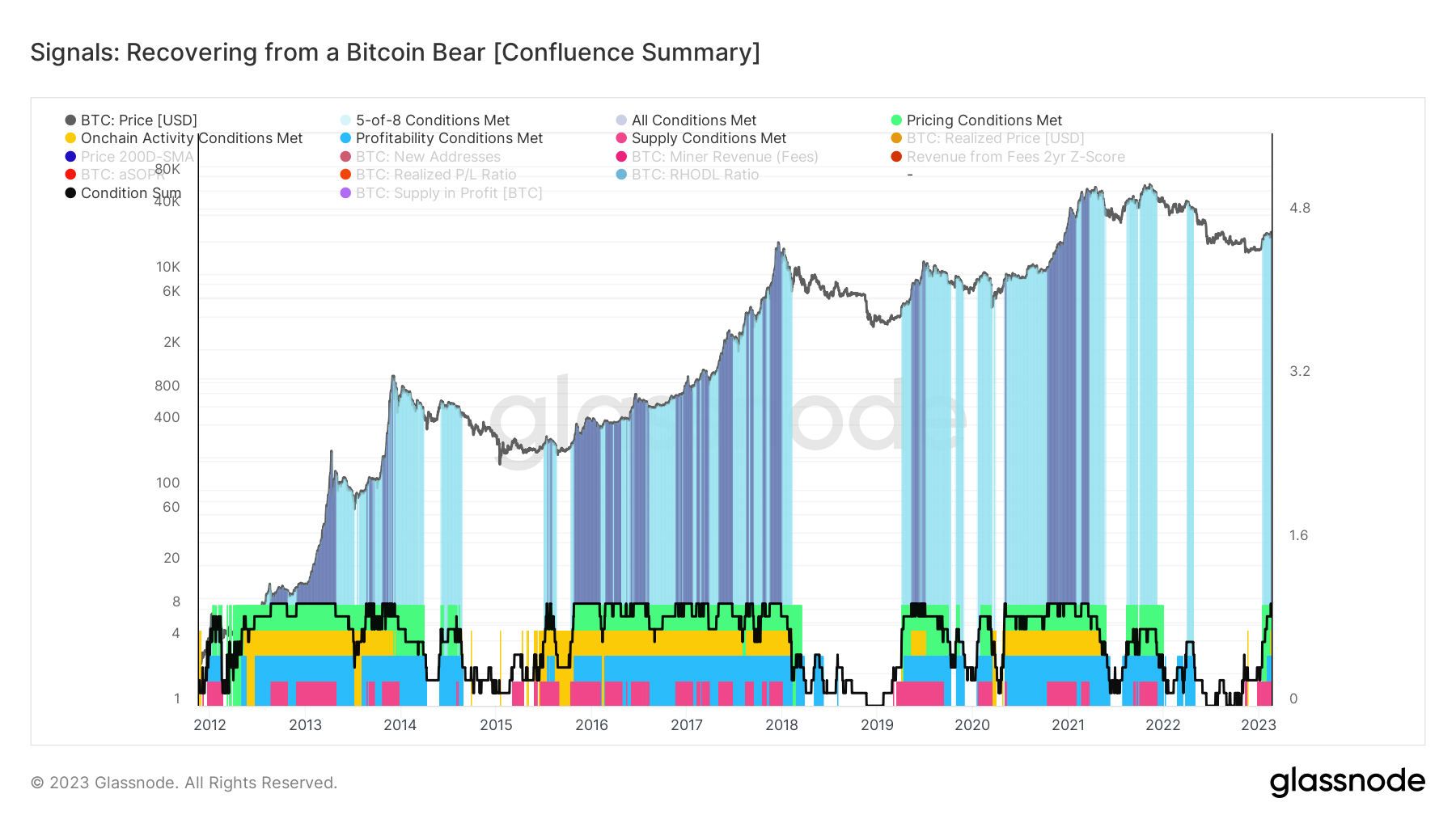
This could have important implications for the Bitcoin price. As the graphic above demonstrates, during a Bitcoin bull market, it is common to see Glassnode’s “Recovering from a Bitcoin Bear” dashboard alternate between all eight and fewer than eight indicators flashing green. This in itself does not mean anything for the Bitcoin price.
What makes more sense here is when you consider the moment when all eight indicators on the dashboard start flashing green for the first time after a prolonged Bitcoin bear market. The last time this happened was in October 2020, when Bitcoin was trading around $11,500. By April 2021, Bitcoin had risen to $63,000. Before October 2020, all eight indicators had not flashed green since July 2019, except for a brief period in April 2020.
Other examples of when all eight indicators started flashing green for the first time in a long time after a prolonged Bitcoin bear market include in May 2019 and in October 2015. All of these previously mentioned instances represent excellent moments to have bought Bitcoin. If all eight of Glassnode’s Recovering from a Bitcoin Bear indicators start flashing green, as soon as that may be likely, analysts could thus interpret this as a signal that Bitcoin’s risk-reward at current price levels is very good.
Break down the recovery from a Bitcoin Bear Dashboard
Below is an overview of each of the eight indicators used by Glassnode in their “Recovering from a Bitcoin Bear” dashboard.
Signals 1 and 2 – Bitcoin above 200DMA and realized price
Bitcoin’s 2023 rally has seen it break north of its 200-day simple moving average (SMA) and realized price, the average price at the time when each Bitcoin last moved. Both are seen as technical levels with important long-term significance. A break above them is seen by many as an indicator that the short-term price momentum is shifting in a positive direction.
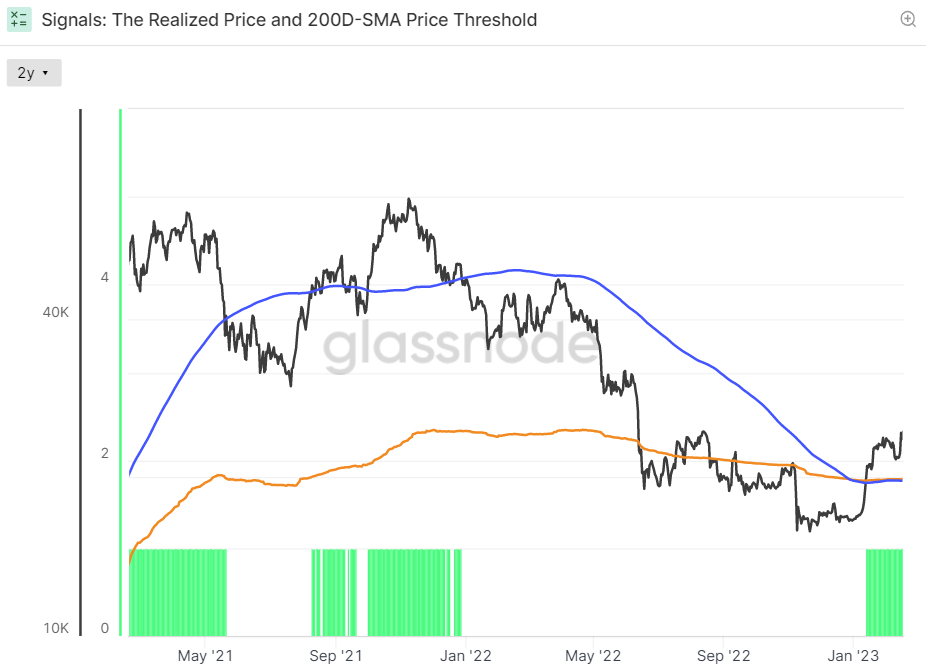
Signal 3 and 4 – New address and fee income momentum is positive
The 30-day SMA for the creation of new Bitcoin addresses moved above its 365-day SMA a few months ago, a sign that the rate at which new Bitcoin wallets are being created is accelerating. This has historically happened at the start of bull markets.
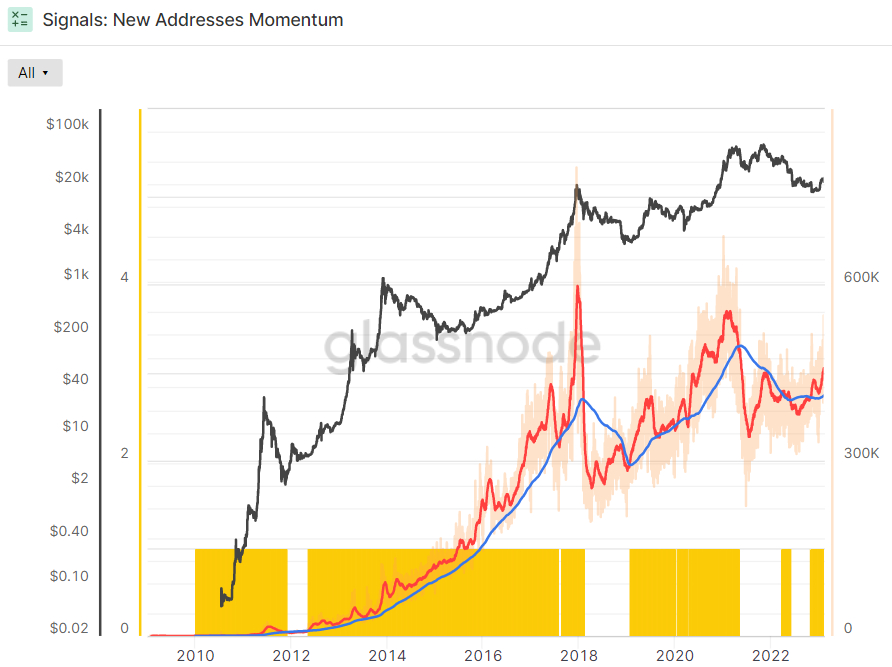
Multiple income from fees was the indicator that turned positive on Wednesday, then turned negative again on Thursday. Z-score is the number of standard deviations above or below the mean of a data sample. In this case, Glassnode’s Z-score is the number of standard deviations above or below the average Bitcoin fee income for the last 2 years.
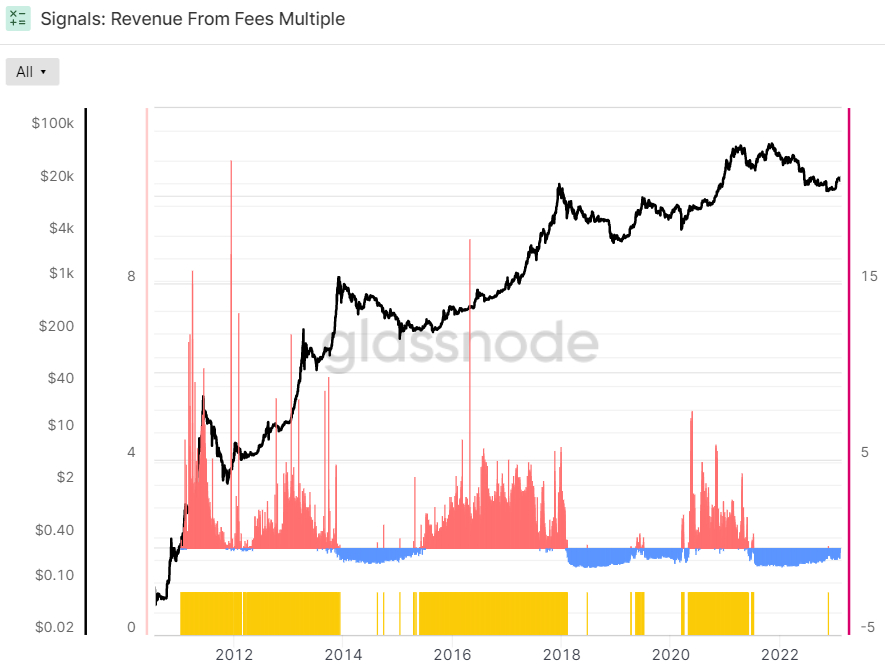
Signal 5 and 6: Market profitability is on the way back
The 30-day simple moving average (SMA) of the Bitcoin Realized Profit-Loss Ratio (RPLR) indicator moved above one a few weeks ago for the first time in April last year. This means that the Bitcoin market realizes a larger share of profits (denominated in USD) than losses.
According to Glassnode, this “generally means that sellers with unrealized losses are exhausted, and a healthier inflow of demand exists to absorb profit-taking”. Therefore, this indicator sends a bullish sign.
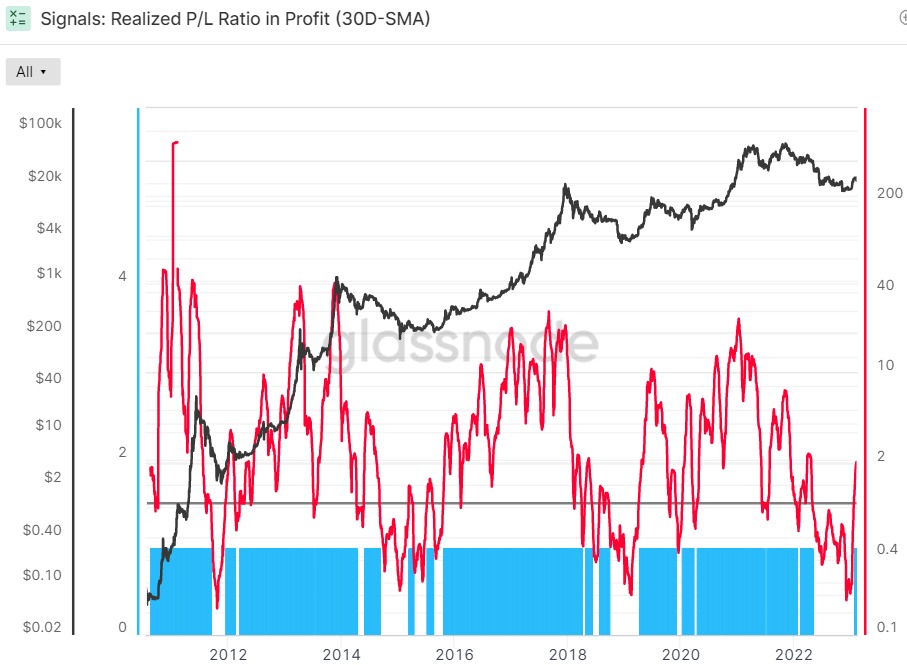
Meanwhile, the Adjusted Expense Ratio (aSOPR), an indicator that reflects the degree of realized profit and loss for all coins moving on-chain, also recently passed 1, indicating that the market is in profit. Looking back at the last eight years of Bitcoin history, aSOPR rising above 1 after a prolonged period below it has been a fantastic buy signal.
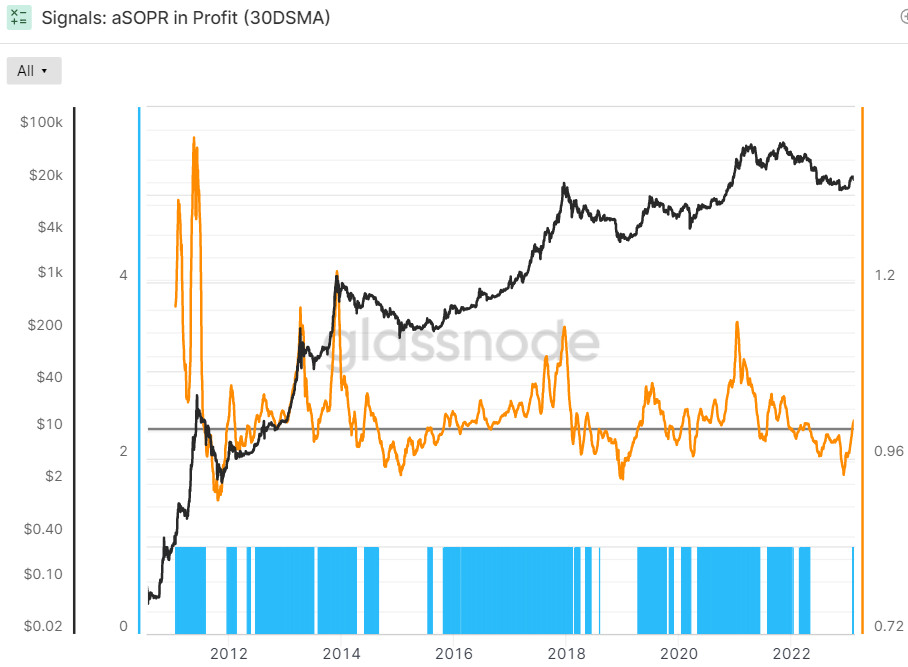
Signals 7 and 8: The BTC balance has shifted in favor of the HODLs
The Bitcoin Realized HODL Multiple has been in an uptrend for the past 90 days, a bullish sign according to Glassnode. The crypto analytics firm states that “when the RHODL Multiple transitions into an uptrend over a 90-day window, it indicates that USD-denominated assets are beginning to shift back toward new demand inflows”. It “indicates that profits are being taken, the market is able to absorb them… (and) that long-term owners are starting to use coins,” says Glassnode.
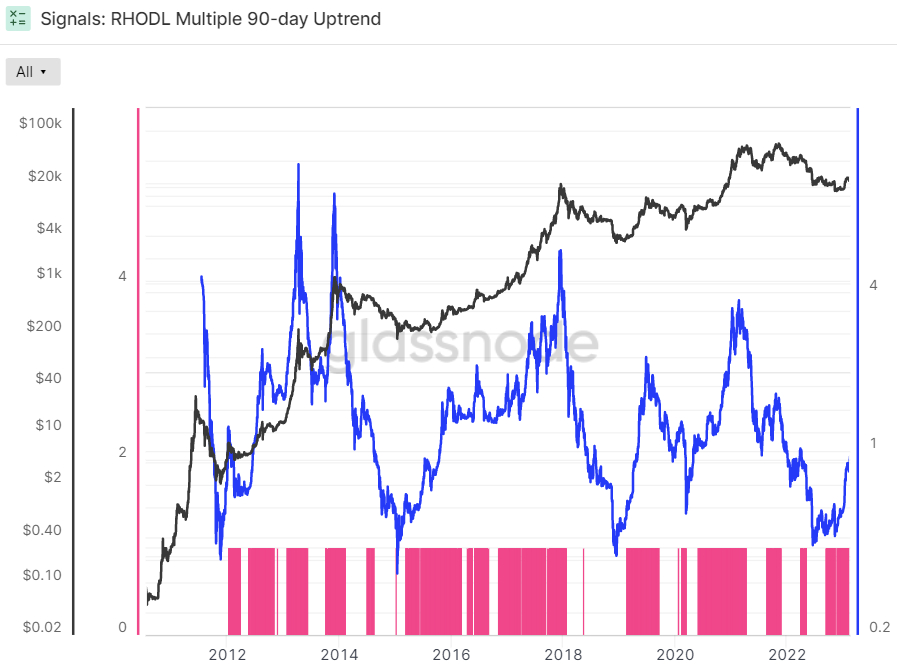
Glassnode’s final indicator in the Bitcoin Bear recovery dashboard is whether or not the 90-day exponential moving average (EMA) of Bitcoin Supply in Profit has been in an uptrend over the past 30 days. Supply in Profit is the number of Bitcoins that last moved when USD prices were lower than they are right now, suggesting they were bought at a lower price and the wallet is holding onto a paper profit. This indicator also flashes green.
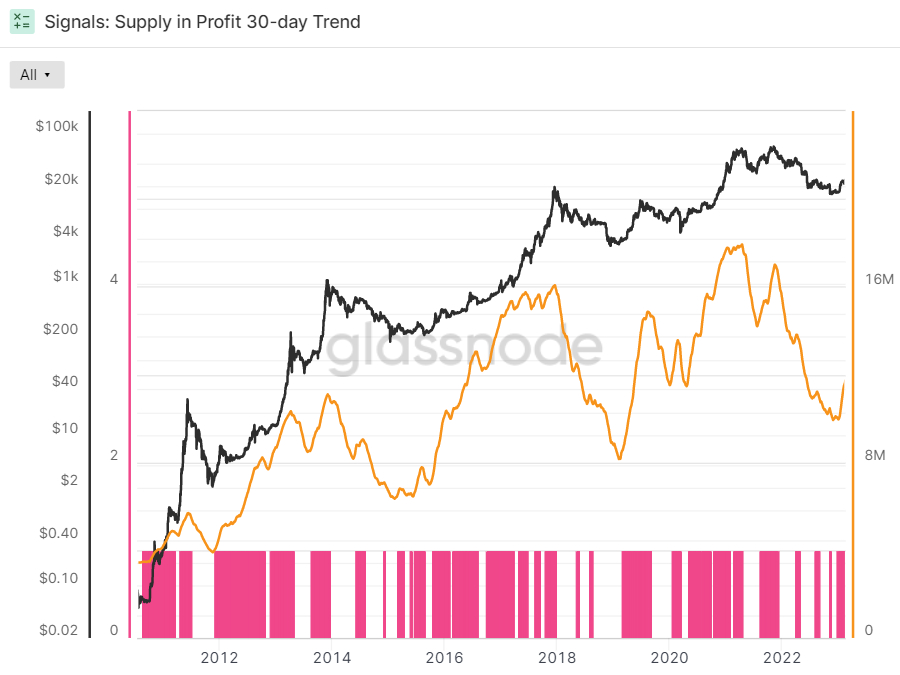
Glassnode’s widely followed dashboard comes at a time when a laundry list of other popular chain and technical indicators are also flashing bullish signals.
Read more: Bitcoin Bears Pass – Yet Another Key Calculation Flashes a BTC Buy Signal
Given all of the above, it should perhaps come as no surprise that Bitcoin continues to defy macro headwinds, such as the recent rally in the US dollar and US bond yields driven by a build-up of Fed-tightening expectations in the wake of recent hawks. communications from policymakers following this month’s string of super-strong US data releases.


